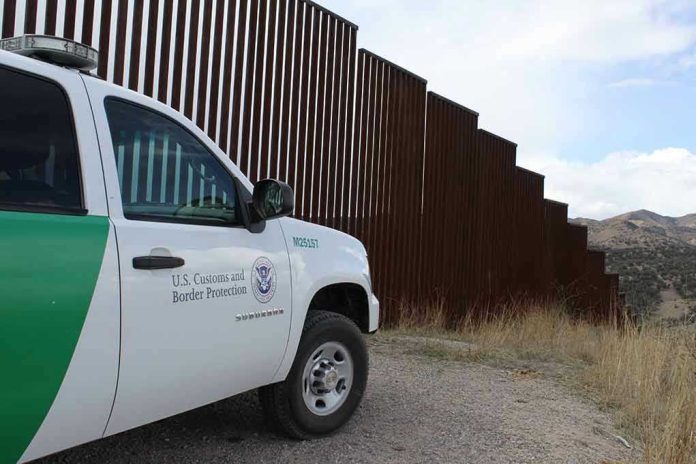
President Trump’s directive to paint the U.S.-Mexico border wall black aims to increase its surface temperature, making it more difficult to climb.
Story Overview
- The border wall will be painted black to deter climbing by increasing heat absorption.
- Secretary Kristi Noem announced the initiative in New Mexico on August 19, 2025.
- The initiative is part of a broader strategy including technology upgrades.
- This approach builds on similar tests conducted during Trump’s first administration.
Trump’s Directive: Painting the Wall Black
President Donald Trump has ordered the painting of the U.S.-Mexico border wall black. This move is designed to enhance the wall’s deterrent capabilities by increasing its surface temperature, making it less climbable. Secretary of Homeland Security Kristi Noem announced the initiative in Santa Teresa, New Mexico, emphasizing the psychological and physical barriers this change aims to create, supplementing existing security technologies.
This directive follows similar experiments during Trump’s first administration, where black coatings were tested on select sections of the wall. The rationale behind this is simple: the color black absorbs more heat, thus making any surface it covers hotter and less appealing to climb. This modification is part of a comprehensive strategy that includes both physical and technological enhancements to border security.
Operational Strategy and Stakeholder Roles
Under the leadership of Secretary Noem, the Department of Homeland Security (DHS) is spearheading the implementation of this initiative. The U.S. Customs and Border Protection (CBP) is tasked with the operational aspects, including construction and maintenance of the wall. The initiative is not just about physical infrastructure but also involves integrating advanced technology such as cameras and sensors to enhance border security.
Key stakeholders, including border patrol agents and immigration advocacy groups, have differing views. While agents see the potential for increased deterrence, advocacy groups are concerned about the humanitarian implications. The ongoing collaboration between DHS and CBP aims to ensure effective implementation while addressing operational feedback from those on the ground.
Implications and Future Outlook
The short-term implications of painting the wall black include a potential decrease in climbing attempts due to the increased surface temperature. This high-temperature surface acts as a psychological deterrent, reinforcing the physical barrier. However, questions remain about the long-term effectiveness and potential maintenance costs associated with this strategy.
While this initiative strengthens the Trump administration’s border security narrative, it also raises debates over resource allocation and the broader impacts on immigration patterns. The security infrastructure sector may see increased demand for similar enhancements as physical deterrence measures gain prominence. However, experts continue to emphasize the need for comprehensive immigration reform to address the root causes of migration.
Sources:
Axios: Trump Border Wall Black Paint Initiative
DHS & CBP Resource Allocation Document
Fox News: Kristi Noem on Trump’s Border Wall Strategy













